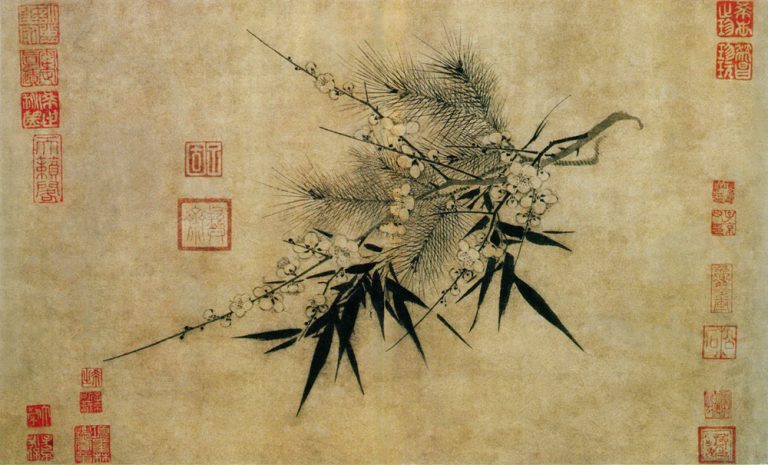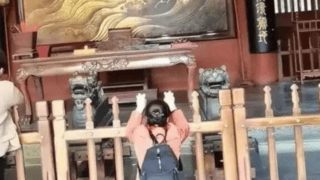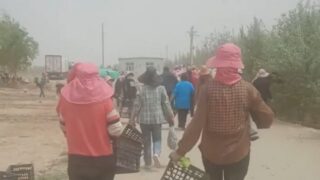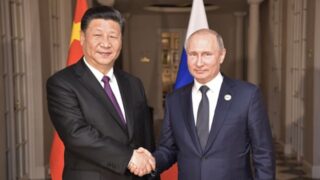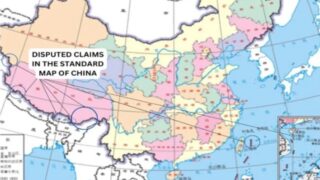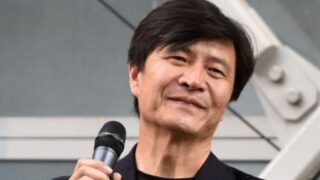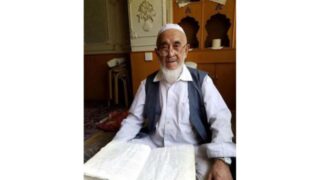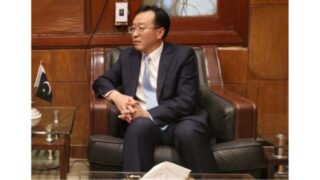This political move would solve an intractable historical problem: East Turkestan (Ch. Xinjiang) lies outside China’s Great Wall.
by Kok Bayraq


Two Chinese scholars—Zhou Wen of Fudan University and Mi Jun of Sichuan University—developed the idea of building a second capital in East Turkestan (Xinjiang to China), arguing that this is necessary to establish an economic balance between different regions of the country. Given that their recommendation is based on a four-year government-funded study, it is more a political plan than a scientific suggestion.
As it is known, the main goal of China’s Uyghur policy is an eternal stability. To achieve this, China is struggling on the military, political, economic, and ideological fields for decades.
In the ideological field, especially in defending the thesis that East Turkestan has been part of China since ancient times, China has encountered several obstacles. One such obstacle is the location of the Great Wall of China. East Turkestan is outside the Great Wall.
According to China, Uyghur “separatists” maliciously use the Great Wall location to argue that “the Chinese have not ruled us throughout history, on the contrary, they have greatly benefited from being protected by us.” Some “hostile forces,” they claim, use venomous sentences such as “Urumqi is closer to Tashkent than to Beijing.” Chinese propaganda depicts the Uyghurs as “the restless people in the westernmost part of China.” However, history and geography cannot be changed, and East Turkestan cannot be placed inside the Great Wall.
How can China overcome these obstacles? It is not possible to move East Turkestan inside the Great Wall of China, nor to move the Great Wall so that it would include East Turkestan. Chinese propaganda has used items such as a pair of hai (Chinese traditional shoes made of cloth), a Chinese-written paper, or a Chinese-like skeleton found in East Turkestan as evidence that the region has always been “Chinese.” But this “evidence” is unconvincing.


Zhou Wen and Mi Jun believe that the solution is not in the past but in the future, with the concept of a “second capital.” They stated, “This plan is good for stability, relations between nationalities, and the integrity of the country.” They believe that, if this vision is realized, the Uyghurs will become a people living in the heart of China, not in its westernmost part. Urumqi or Kashgar would be politically closer to Beijing, rather than to Tashkent or Baghdad.
However, the Great Wall is not the only problem for China’s theory of “territorial integrity” claiming that the Uyghur land is “Chinese.” History aside, there are five facts that place China in a difficult position:
1. Uyghurs dominate the population of the region.
2. The Turkish-Islamic cultural identity of Uyghurs is fundamentally different from Chinese identity.
3. Uyghurs have never relinquished their will for independence, and the resistance movement has endured for centuries in the region.
4. Uyghurs have Eurasian ethnic characteristics.
5. The name “Xinjiang” means “new border,” and reflects the colonial Chinese idea of the region.
These facts clearly confirm the historical position of East Turkestan, without even the need for further explanation, interpretation, or research.


Over the past twenty years, China has taken concrete and drastic measures to remove and weaken the top three obstacles. It tackled the fact that the region has a Uyghur majority through immigration and family planning. It tried to eliminate cultural differences through the campaign against religious extremism. It repressed the Uyghur will for independence through a ruthless anti-terrorism campaign.
Regarding the name “Xinjiang,” China now insists the region was a “new frontier” for the Qing Dynasty but was not so for the earlier Han Dynasty. Uyghurs answer that in the last 2,000-year history of Sino-Uyghur relations, Chinese and Uyghurs have been together for no more than 200 years—and these years are at the origins of present-day hostility between the two peoples. As for visible ethnic differences, in recent years, interethnic marriages have been “encouraged” hoping to eliminate them. Uyghurs have resisted this policy, and its success has been but limited.
Today, there are scholars who suggest to take another step: build China’ “second capital” in “Xinjiang.” Undoubtedly, the goal of the “second capital plan” is more political than economic. If the goal were to restore economic balance, it might have been achieved by giving a fairer share of the natural resources of the region to locals, stopping the influx of Chinese immigrants, and allowing locals, traditionally skilled in commerce, to trade freely with neighboring countries. Additionally, if the aim were to promote them, three million Uyghurs would not have been imprisoned and deprived of a normal life.
Zhou Wen and Mi Jun explained the additional motivations supporting the “second capital plan” as follows: “If the second capital is built, not only funds but also population will be transferred to the region. This increase [of Han Chinese population] will affect the demographics of the region, the culture, the thoughts and feelings of local people, and ultimately increase the sense of patriotism.”
What else can be said? Scholars writing in China cannot reveal state secrets or cast in doubt the official Party line. The idea of a “second capital” in East Turkestan is a paradoxical attempt to move the Great Wall of China. This is physically and historically impossible but, the scholars believe, may become politically possible.
As part of the same strategy, by taking advantage of the historical opportunity of the “war on terrorism,” China has mobilized all its internal and external resources to carry out the Uyghur Genocide as a final solution of the Uyghur “problem” for the last six years. However, even after six years of genocide, China still feels unsure about stability. Perhaps the “second capital plan” may achieve the result, after the genocide could not get the CCP to is final destination as quickly as it hoped. Although China destroyed the lives of three million Uyghurs detained in the camps, another fifteen million with a heart full of desire for vengeance continue to be a threat for China and a scourge for the future.


Therefore, considering all possibilities, China may want to move one step further with the “second capital plan.” In this case, future generations will know that this “second capital” was established on Uyghur land.
The famous traveler Zhang Qian’s business trip to the West and Lin Zeshu’s deportation to Gulja (Yili) are used to support the theory that East Turkestan was part of ancient China. Creating a second capital of China in East Turkestan would be a hundred times more effective. East Turkestan will no longer be the homeland of the Uyghurs. China wants to expand the Great Wall beyond East Turkestan as part of its ideological battle against “Uyghur separatism.”
